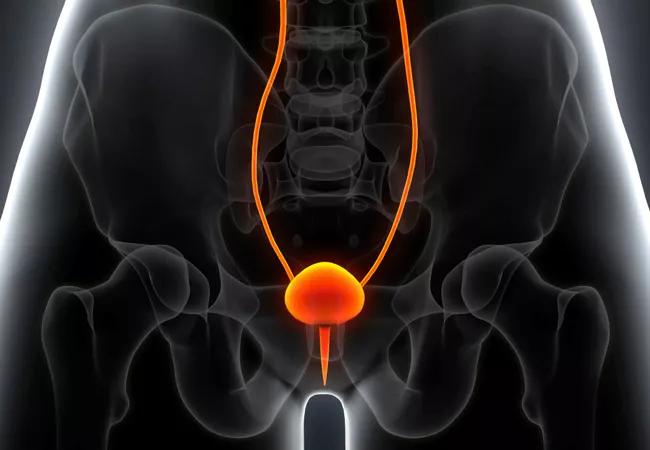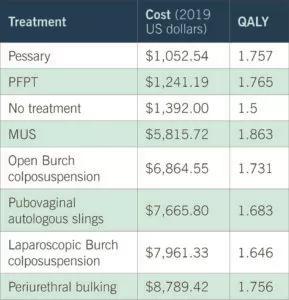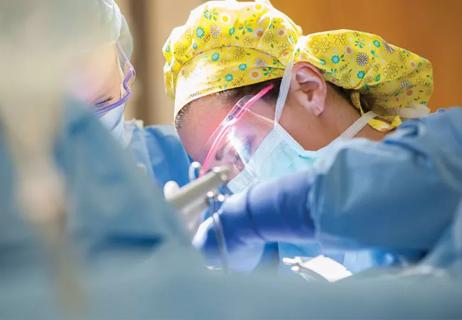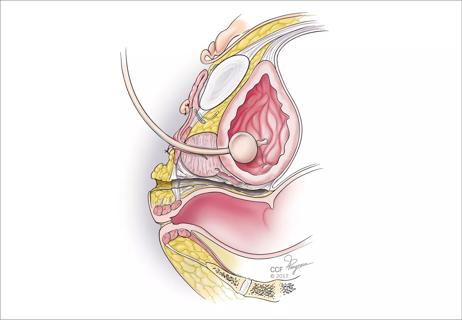FDA ban of transvaginal mesh for POP prompts evaluation of MUS

Stress urinary incontinence (SUI) is the most common type of urinary incontinence in women younger than 60, accounting for at least half of all incontinence in women. SUI is one of the most common indications for surgery in women, with more than 210,000 undergoing surgery for SUI annually in the United States.
Cleveland Clinic is a non-profit academic medical center. Advertising on our site helps support our mission. We do not endorse non-Cleveland Clinic products or services. Policy
The gold standard for SUI surgical treatment is the midurethral sling (MUS), which uses a small strip of mesh that is placed under the urethra. The current medical consensus is that MUS for incontinence is one of the best and safest treatments for SUI.
With the recent U.S. Food and Drug Administration (FDA) order to stop selling and distributing transvaginal mesh for the treatment of pelvic organ prolapse (POP), the medical community has been concerned that the use of transvaginal mesh for SUI could be restricted. The order has also led to confusion among patients about the status of MUS. “While it isn’t likely that the FDA will ban MUS anytime soon, we do wonder if MUS could be removed from the market at some point, as it has been in the United Kingdom,” says Beri Ridgeway, MD, study co-author and Institute Chair of Ob-Gyn and Women’s Health at Cleveland Clinic.
To provide more evidence on the effectiveness of MUS, the Cleveland Clinic Ob/Gyn & Women’s Health Institute, in collaboration with Providence St. John’s Health Center and Trinity Health of New England, conducted a study looking the potential impact on women of a treatment landscape with and without MUS. The findings will be presented at the 2019 American Urogynecologic Society and International Urogynecological Association Joint Scientific Meeting.
The researchers used a modelling tool to analyze the cost-effectiveness of all the current SUI treatments: no treatment, pessary, pelvic physical therapy (PFPT), MUS, open and laparoscopic Burch colposuspension, pubovaginal autologous slings and periurethral bulking injection (PUBI).
The time frame studied was two years after initial treatment. Surgeons developed treatment pathways with and without the availability of MUS, including care, recurrence with potential reoperation and complications. The costs considered included index surgery, surgical retreatment and complications including urinary retention, de novo urgency and mesh exposure. Effectiveness was measured with quality-adjusted-life years (QALY). Cost, probability and utility data was gathered from Medicare reimbursement data and published literature.
Based on the analysis, the treatments varied in effectiveness, with MUS the most effective and no treatment the least effective.

While there are cost-effective non-surgical treatment options, MUS was the only cost-effective surgical option. If MUS were not available, open Burch colposuspension would be the preferred option, according to the study authors, since it has the lowest cost next to MUS.
“We were surprised that MUS is the only cost effective surgical treatment. If it were to be removed from the market, there would still be other surgical options but they are less effective and more costly. Our data provides another perspective for patients and providers to consider and additional evidence for the importance of midurethral slings in treating stress urinary incontinence,” says Dr. Chang.

Deprivation is linked to impaired glucose intolerance and racial disparities

Artesunate ointment is safe well and tolerated patients with vulvar intraepithelial neoplasia

A case-based discussion of efficacy, eligibility and use

Workshop curriculum was valued by some, while others would have preferred time for themselves

Study finds lower incidence of endometriosis than in cisgender patients

Large randomized study compares embryo growth kinetics and live birth rates between culture media

Surgeon experience is key to reducing adverse events

Introducing Laura Detti, MD, newly appointed Chair of the Department of Subspecialty Care for Women’s Health